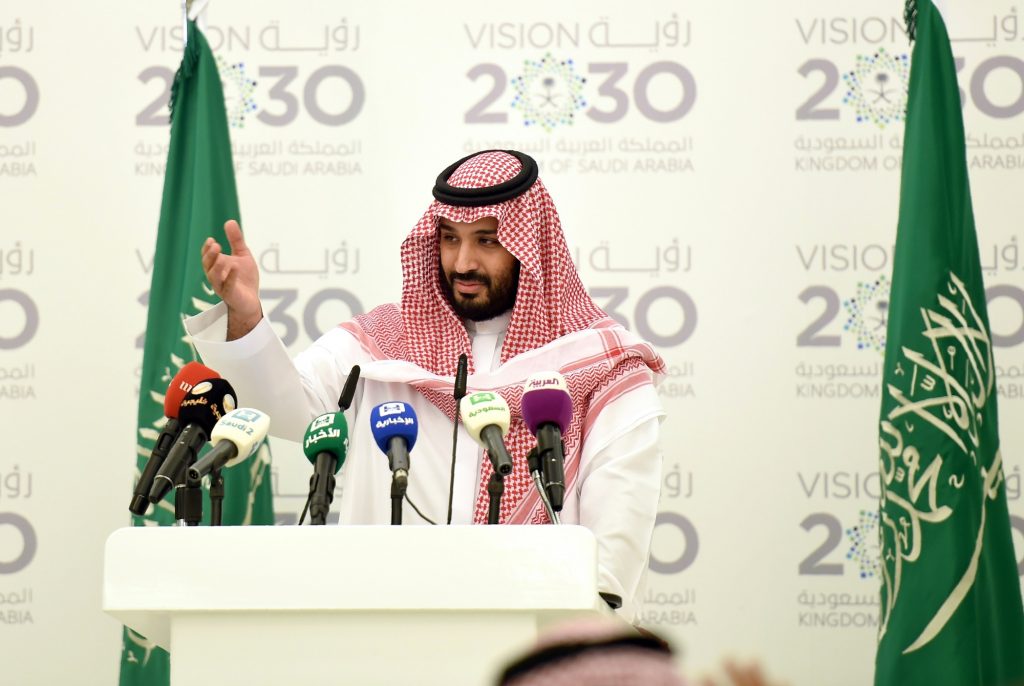
- ARAB NEWS
- 18 Jul 2025

Staff Writer
Saudi Arabia’s geographic position between key global waterways makes the Kingdom an epicenter of trade and the gateway to the world.
The country is right at the crossroads of important international trade routes, between three continents: Asia, Europe and Africa.
Although oil and gas are essential pillars of the economy, Saudi Arabia has begun expanding its investments into additional sectors.
The country is rich in natural resources and does not depend solely on oil for its energy needs. Gold, phosphate, uranium and many other valuable minerals are found beneath its lands.
In order to build a thriving economy, Saudi Arabia has embarked on Vision 2030, with wide-ranging plans and objectives to diversify its economy.
“It is my pleasure to present Saudi Arabia’s vision for the future,” Crown Prince Mohammed bin Salman, deputy premier and defense minister, said of the reform plan, which was first released on April 25, 2016.
“It is an ambitious yet achievable blueprint, which expresses our long-term goals and expectations and reflects our country’s strengths and capabilities,” added the crown prince, who is also chairman of the Council of Economic and Development Affairs.
Emphasizing that all success stories start with a vision, and successful visions are based on strong pillars, he outlined the following as the pillars of Vision 2030:
As the crown prince outlined, the country’s real wealth lies in the ambition of its people and the potential of its younger generation. Vision 2030 aims to achieve the following:
2. A thriving economy
3. An ambitious nation
The vision sets some ambitious goals to be achieved by 2030, including:
The document also commits to ensuring a more prominent role for families in the education of their children, and efficient and high-quality health care. It also sets the following objectives:
Among the commitments that Vision 2030 makes, the most prominent is ensuring the education that contributes to economic growth.
“We will close the gap between the outputs of higher education and the requirements of the job market. We will also help our students make careful career decisions, while at the same time training them and facilitating their transition between different educational pathways,” says the document.
“In the year 2030, we aim to have at least five Saudi universities among the top 200 universities in international rankings. We shall help our students achieve results above international averages in global education indicators.” It also outlines a bigger role for SMEs.
The country understands that there are complicated challenges ahead, but it has long-term plans to overcome them.
In the past 25 years, the Saudi economy has grown by an annual average rate of more than 4 percent, contributing to the creation of millions of new jobs.
Although it is already among the 20 largest economies in the world, its ambitions are even greater.
“We aspire to have an even higher ranking by 2030, despite the headwinds of the global economic slowdown and the expected impact of our structural economic reforms,” the document says.
This requires the country to invest in all its resources in order to diversify the economy, unleash the capabilities of its promising economic sectors, and privatize some government services. The authorities have set the following targets:
Among its commitments is to localize the defense industry. Although the Kingdom is the world’s third-biggest military spender, only 2 percent of this spending is domestic, so it aims to localize over 50 percent of spending on military equipment by 2030.
Other areas being earmarked for enhancement include a mining sector contributing to the national economy at full potential, and a sustainable renewable-energy market.
In order to improve the business environment, the country is pursuing public-private partnerships, continuing to facilitate the flow of private investment, and improving its competitiveness.
The plan to bolster the business environment includes restructuring economic cities, creating special zones, and deregulating the energy market to make it more competitive. This area can be summed up in the following objectives defined under Vision 2030:
The idea is to achieve these tangible targets:
The commitments made under Vision 2030 also entail the following:
These lead to the following deliverables:
As part of the plan to ensure effective governance, Vision 2030 outlines the following key areas:
These efforts are targeted to lead to the following outcomes:
The vision also plans to:
According to the document, a comprehensive and ambitious vision has already been outlined until the year 2030.
“To achieve our aspirations and hopes, we have already launched many transformative programs that have paved the way for the vision and will help us achieve our goals,” it says. These include:
The document outlines that to ensure the realization of Vision 2030, the Kingdom is preparing to launch a group of executive programs that will have a significant impact on implementation. These include: